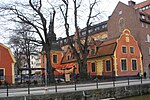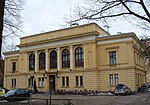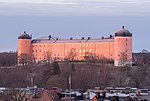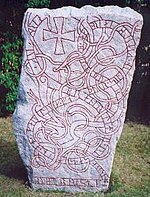Fjärdingen

Fjärdingen is a neighbourhood in the inner city of Uppsala, Sweden, situated on the western banks of the river Fyris. It has been the ecclesiastical centre of Sweden since the 13th century and contains many of the historical sights and landmarks of Uppsala, notably Uppsala Cathedral on the Domberget hill, with the Archbishop's residence and Church of Sweden offices, as well as the historical university district of Sweden's oldest university, Uppsala University. Notable university buildings in the area include University Hall, Gustavianum and Carolina Rediviva, as well as most of the student nation buildings. To the south, Uppsala Castle, the University Hospital and the Stadsträdgården city park form the boundary of the historical inner city.
Excerpt from the Wikipedia article Fjärdingen (License: CC BY-SA 3.0, Authors, Images).Fjärdingen
Östra Ågatan, Uppsala Centrum
Geographical coordinates (GPS) Address Website Nearby Places Show on map
Geographical coordinates (GPS)
| Latitude | Longitude |
|---|---|
| N 59.855 ° | E 17.64 ° |
Address
Kvarteret Munken
Östra Ågatan
753 22 Uppsala, Centrum
Sweden
Open on Google Maps











